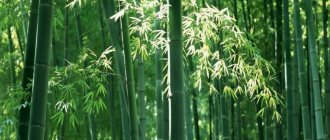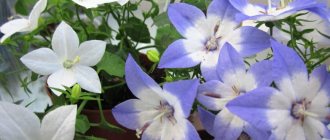- September 25, 2018
- Flowers
- Karmelia
Hibiscus (Chinese rose) is surrounded by many legends, according to which it improves the health of household members, is an absorber of evil forces, and can even help its owner get married or, conversely, scare away all gentlemen. In addition, in addition to her magical powers, she has an attractive appearance, is unpretentious and easy to care for. These arguments helped this flower become one of the favorite species for breeding at home.
Description
The flowers of indoor hibiscus (Chinese rose) can be of different shades. And their distinctive feature is the fusion of organs for reproduction - pistils and stamens, which are attached between the petals. The leaves are dark green in color with a glossy surface and are located close to each other and are located throughout the crown. The trunk becomes completely lignified, which brings the hibiscus closer to the appearance of trees.
This is an ornamental plant, reaching a height of up to 4 meters in natural conditions. At home, the maximum height reaches only one and a half meters. The branches are very spreading, and therefore hibiscus (Chinese rose) requires a lot of space. It is usually placed on the floor in large flower pots or tubs. The root system is also very well developed and large in size.
Types and varieties of Hibiscus for growing at home
General information about the plant:
- in nature, the height of some tree species reaches 10 m or more;
- genus from the Malvaceae family;
- there are shrubs, trees and herbaceous plants, annuals and perennials;
- in nature, Hibiscus grows in the tropics and subtropics, in Europe and America;
- large leaves, large flowers, lush crown, bright greenery, shades of petals - from white to deep red;
- A popular greenhouse and indoor plant is the Chinese rose. The photos help to understand why, when looking for an ornamental plant to decorate offices, Hibiscus rosa-sinensis is chosen with large, bright red, scarlet-tinged flowers, simple or double;
- a tree with a central trunk grows up to 2–3 m, sometimes higher, requires pruning and crown formation;
- the homeland of indoor hibiscus (Hibiscus rosa-sinensis) is the Malay Archipelago;
- Breeders have developed many interesting varieties of Chinese roses with varied shades of petals.
There are many types of Hibiscus in nature:
- Hibiscus Syrian tree.
- Trifoliate.
- Volatile.
- Chinese.
- Bolotny.
- Sudanese.
- Cosmatofruitous.
- Trifoliate.
- Terry.
Some species change the shade of their petals during different flowering periods. Previously, the Chinese rose had only bright red petals, but in recent years hybrid varieties with different bud colors have been developed: white, yellow, combined, with a bright center.
What humidity is needed for hibiscus?
This type of plant is demanding on drainage and a constant supply of organic matter. However, ensuring these conditions, although mandatory, does not cause much trouble to the owner. For Chinese hibiscus, care is very important. It is enough just to pay attention to maintaining the required level of soil moisture and preventing the roots from rotting. To do this you need:
- add a little clay to the substrate, it will help the hibiscus achieve higher growth rates;
- to avoid diaper rash, mulch the soil;
- prevent water from stagnating when watering the flower frequently;
- use drip irrigation; however, it is important not to injure the delicate petals, so moisture should not get on them;
- Carry out regular spraying to avoid drying out and maintain the desired level of humidity.
If these conditions are met, the Chinese rose will receive the most comfortable atmosphere for good growth. This is especially important at home, where heating systems are constantly running.
Diseases and pests of Hibiscus domestica with photos and their treatment
Chinese rose is a strong and strong plant that can easily withstand various adversities in the form of harmful insects and diseases.
Rarely, scale insects, spider mites and aphids appear on Hibiscus leaves. You can get rid of them with regular spraying, treatment with soapy water and special preparations. Insecticides are recommended for use in difficult cases. Then Actellik, Aktara and other pest control products are suitable.
Among the diseases, chlorosis and rot can be dangerous. In case of chlorosis, it is recommended to regularly fertilize the plant with special fertilizers, and also rinse it well in the shower with warm water. The sick flower is kept in quarantine until the situation improves.
If a rot disease occurs, you need to remove the Hibiscus from the pot, remove all damaged parts and treat it with fungicides. After this, the flower is transplanted into a fresh substrate.
Also, when growing Hibiscus, the following difficulties may arise:
- The falling of leaves and buds is a draft or a sudden change in living conditions.
- Stretching of stems, yellowing of leaves - lack of light. It is necessary to move the plant to a brighter place or illuminate it with a lamp.
- The leaves curl, the tips dry - dry air.
- Leaves become pale or yellow due to watering with hard water or iron deficiency. Watering should be done with soft, settled water, and the flower should also be fed with special preparations containing iron.
Often, if the rules of care and maintenance conditions are violated, the Hibiscus stops blooming. Most often this is due to:
- Lack of light or too intense lighting.
- Lack of nutrients.
- Lack of cool wintering and proper plant rest.
- Dry air and irregular watering.
- No pruning.
How to make Hibiscus bloom at home:
- Provide the plant with good lighting, warmth and regular watering.
- Check the pot. If the selected container for planting is too spacious, you may need to transplant the flower into a more suitable container.
- Feed the plant with special preparations containing potassium, magnesium and phosphorus.
- Provide cool rest from autumn to late winter.
- In early spring, trim all old branches to stimulate the growth of young shoots and increase bushiness.
If all conditions are met and the plant receives everything it needs for growth, then it will certainly delight with an abundance of bright and large flowers.
Lighting and air flow for Chinese rose
The Chinese rose, or Chinese hibiscus, prefers rooms with good air circulation and therefore will not grow well in a musty room. Also, if you grow several roses at home, it is better not to place them close to each other and keep them away from direct sunlight and heat. If the plant is grown in hot tropical countries, then you need to choose a place for planting with periodic shading in the case of a flowering specimen. And you can choose permanent shade if the hibiscus does not bloom.
In general, the Chinese rose, or hibiscus (flower of death), a photo of which you can see in the article, is quite tolerant of various conditions; it only does not tolerate extremes, for example, direct sunlight on a windowsill on the south side or cold and shade on the north side. And even at home you can create favorable conditions for growing it without spending a lot of effort.
Street hibiscus: does it bring death?
Chinese, Sudanese rose is grown in gardens and on the streets of areas with a very warm, tropical climate. Those who believe in superstitions and signs are sure that the street plant also brings death to the owners of those homes near which this shrub grows.
Many people believe that the omens related to indoor hibiscus also have a negative effect when cultivating Chinese roses in gardens, front yards and on the street. In addition to the fact that the Chinese rose “pulls” the energy of the owner of the garden, it is rumored to be endowed with the ability to shorten the life of its owner. This statement is unsubstantiated and there is no point in believing it.
Watering hibiscus
When growing a hibiscus rose, you will not need to devote much time to care, with the exception of watering. This type of plant is very demanding on the amount of water and humidity level. It is strictly not recommended to allow the soil in the pot to dry out. In summer you will have to water more often than in winter.
In addition, there are several rules regarding hibiscus claims regarding watering:
- The soil in the pot should always be moist.
- It is better to water hibiscus using drip irrigation.
- Throughout the year, Chinese roses need to be sprayed.
- Particular attention should be paid to watering and maintaining the required level of air humidity during the heating season.
The Chinese rose should be watered with water at room temperature, previously settled. You also need to moisten the foliage so that it is saturated with moisture. This will help prevent the occurrence of certain diseases. The main thing is that water does not get on the flowering buds, since hibiscus petals are very delicate and can be easily damaged.
Wintering
In open ground conditions, winter shelter is urgently required for young bushes. Mature specimens tolerate winter much easier.
In preparation for winter, late autumn watering and hilling , and in the second half of November the branches are bent to the ground , covered with non-woven material (lutrasil, spunbond), then with polyethylene and pressed. Cover with spruce branches.
You can also install a frame around the bush and wrap it with covering material in several layers.
In container culture , with the arrival of winter, it is advisable to move the hibiscus to a well -lit place with a temperature of about 13 degrees. Watering should be limited.
Chinese rose soil requirements
This species loves high humidity, so the soil on which it is grown must be well-permeable to moisture and air. Ready-made peat-based soil, sold in any gardening store, will not be able to provide the necessary permeability. Therefore, in order to offer the hibiscus (Chinese rose) the care it needs, it is better to prepare the soil yourself, observing several points:
- It is worth adding a little rotted leaves to the substrate purchased in the store, this will give the desired structure to the soil and increase its moisture capacity;
- you can also add a small amount of sand and turf;
- it is necessary to create a slightly acidic reaction among the pH should not exceed 6.8, otherwise the absorption of nutrients from the soil will be difficult.
What fertilizers to use
Hibiscus (Chinese rose) at the growth stage requires constant addition of fertilizers to the soil. But during the flowering period, it is better not to use fertilizers, as they will not give a positive result or even cause harm.
It is noted that roses do not need large doses of phosphorus, since its excess has a negative effect on the plant, impairs flowering and poisons the plant. Whereas the amount of calcium should be much higher. Also, the applied fertilizers must contain magnesium, which is part of chlorophyll; if it is deficient, chlorosis can develop.
To fertilize, you should prefer days when the air temperature is low. It is better to apply fertilizers early in the morning or in the evening into soil previously moistened with water. The frequency of fertilization should not exceed one week, but more often is better. In this case, the dose should be proportionally reduced.
In addition, you can use the foliar feeding method. This requires ten times less fertilizer than for root crops. The diluted mixture must be applied to the surface of the leaves also in the evening or in the morning. A plant that has recently been transplanted cannot be fertilized.
Trimming
Why do you prune hibiscus?
- For rejuvenation;
- For a more luxuriant tree crown;
- If the plant does not produce flowers;
- For cuttings.
When to prune?
Chinese rose responds well to pruning in the spring-summer season, but strictly before the appearance of buds and flowers.
- There is no need to disturb the bush in autumn and winter.
How to prune hibiscus?
- Armed with sharp scissors or pruning shears, first cut off all the dried, bare, elongated branches.
- Feel free to shorten the remaining ones so that two buds (two leaves) remain on the branch; there is no need to cut below. Pretty soon, the pruned plant will produce young shoots and begin to grow.
- If you planned to propagate hibiscus, leave the cuttings if they do not look diseased and dried out.
In this video you can learn about different ways to prune hibiscus.
How to replant hibiscus
When replanting Chinese hibiscus, caring for the plant in the future is very important, and the replanting itself is a prerequisite for successful cultivation.
To transfer Chinese roses, you should choose soil that is very light and contains the maximum amount of nutrients. In addition, it is better to use foliage soil as a base. Peat will not work in this case. The pot for replanting should not be too large.
A drainage layer of expanded clay or small pebbles must be placed at the bottom of the pot; its thickness should be about two centimeters. This layer is covered with soil; you should not mix these components.
The transplant is carried out in several stages:
- Before replanting begins, it is necessary to evaluate the root system. To do this, the plant is removed from the pot and the roots are examined. They should not show signs of rotting or damage caused by pests.
- Then the roots need to be cleared of lumps of earth.
- We transfer the plant to a previously prepared flowerpot. To do this, the plant is lowered into a container and assessed whether it is suitable for a rose. If necessary, if the pot is too deep, you can add more soil.
- After the hibiscus (Chinese rose) is placed in a container, you can cover it with soil, slightly compacting it layer by layer.
- The soil must be filled until about 1.5-2 centimeters remain to the edge of the pot to leave room for irrigation water.
You can even replant during flowering, although in this case you will have to be very careful not to damage the flowers. After replanting, the plant can be watered if watering was not done before replanting, otherwise wait until the next day.
Care after flowering
It is curious that the resting phase of hibiscus is expressed implicitly, and it often surprises owners with unexpected flowering earlier or later than expected. However, if you wish, you can “euthanize” the plant yourself. To do this, gradually, but systematically, reduce and decrease watering until the plant begins to shed its leaves. After this, you can safely shorten the branches to 15-20 cm and put them in cool shade for the winter. Do not forget about watering at all, but let it be very rare.
- Some gardeners cover the soil with paper to allow moisture to evaporate longer.
To “disenchant” your plant, in the spring you need to increase the frequency of watering, and then move it to its usual bright place.
Even without flowers, hibiscus looks beautiful
How to properly prune hibiscus at home
The Chinese rose, or Chinese hibiscus, is considered one of the most beautiful ornamental plants. However, to achieve the ideal shape for the tree to have an attractive appearance, it must be pruned. There are several types of pruning. Her choice depends on the goal pursued by the owner. This could be removing damaged areas or shaping the appearance.
Types of pruning:
- Selective. This type of pruning is designed to maintain the required shape and size. It is better to combine the time for it with the beginning of the growing season in order to get good flowering.
- Topping. This procedure helps stimulate the growth and development of new branches. In addition, its main distinguishing feature is that the main part of the branches remains intact, only a small section is removed. This method is usually used for young hibiscus specimens.
- Corrective trimming. The use of this method is recommended if the branches are quite large. In this case, the cut should be made in a place where there is wood that is still alive. If the cut is white and has a hard structure, then the branch will no longer grow as it is dead.
- Strong. This method is used if the plant is already in critical condition and cannot be saved by either care or treatment.
In order to properly prune a plant and not harm it, you must follow a number of rules:
- First of all, you should set a goal and choose a method;
- then you need to thoroughly wash the instruments. They should also be as sharp as possible, otherwise the cuts will be uneven, which will worsen the appearance and harm the plant: the branches will take a very long time to heal. In addition, you can disinfect instruments using alcohol;
- It is better to choose spring or summer for the pruning procedure;
- after cutting off unnecessary parts of the Chinese rose (hibiscus), its care remains the same;
- It is better to make the cut at an angle of forty-five degrees, and treat the wound areas with crushed, charcoal or activated carbon;
- the apical part is cut off so that there is still space above the outermost branches on top;
- It is very important not to cut off more than two-thirds of the branch.
By following all the above rules, you can minimize the damage caused to the plant during pruning.
What is hibiscus, what flower is called hibiscus?
The decorative flower hibiscus, or Chinese (Sudanese) rose, belongs to the mallow family. The shrub is native to China and northern Indochina. Due to its unpretentiousness, the plant has become widespread in countries with subtropical and tropical climates.
The word “hibiscus” means “ibis bird” (translation from Greek), hinting at the similarity of large inflorescences with a bird. A plant in spacious rooms can acquire enormous dimensions if it is not pruned, then each branch can produce a beautiful flower, while the decorative effect of the bush disappears.
The inflorescences come in red, pink, yellow shades, the type is double or regular, like a bell. The flowering period of any of them is two days. Fallen flowers can be used to brew special medicinal tea - hibiscus.
Seed propagation method
Propagation using seeds is a very interesting activity that is perfect for gardeners who like to experiment and get new unusual shades of flowers. Seeds can be stored for five years, after which they may lose their ability to germinate. Before planting hibiscus, caring for the seeds must begin in advance and disinfect them by soaking them in a weak concentration of potassium permanganate solution.
It is best to plant seeds during the late winter - early spring. For sowing you will need:
- Soil mixture.
- Growth promoting ingredients.
- Greenhouse.
Before sowing, the seeds must be soaked overnight, covered with a solution so that they can “breathe”. Then they are laid out on gauze soaked in water, rolled up and placed in a plastic bag with small holes made in it for oxygen to enter, or in a small greenhouse to warm them up. Caring for Chinese rose (or hibiscus) seeds raises many questions. How to care for seed material before planting is one of the main issues, and by following the sequence described above, you can ensure the maximum number of seedlings.
After the seedlings hatch and germinate, the greenhouse will have to be ventilated daily, and the sprouts will have to be sprayed with water at a temperature slightly warmer than room temperature. And in the greenhouse it should not be more than 27 degrees. When a couple of leaves appear on the sprouts, they need to be transplanted into small pots, following the rules.
Features of care in autumn
In the fall, hibiscus is prepared for a safe winter.
To do this, light pruning and fertilizing with potassium fertilizers is carried out in September. Before frost sets in, water the bush once and very generously. A few days later he is spudded.
In November, the plant needs to be insulated using mulching and shelter.
The branches are bent to the ground and covered with a special cloth.
You can place arches over the young bushes and cover them with fabric as well. This can be done when the outside temperature is below +5 degrees.
We talked in more detail about caring for hibiscus in our material.
Cuttings
The greatest aesthetic pleasure comes from flowers that are grown independently, and their beauty cannot be conveyed by a photo of hibiscus (Chinese rose). But before you admire them, the flowers need to be grown. To do this, in spring or summer you need to stock up on cuttings. You can get them by pruning the plant before replanting. The main thing is that the hibiscus is well watered before the procedure.
The resulting cuttings can be rooted in 2 ways:
- In water.
- In the ground.
In order to plant a new plant, you need to wait until good roots appear that can support an adult plant. The rooting process occurs as follows. You need to take glasses and fill them one-third with soil. Before planting, the cuttings are moistened in heteroauxin. The soil around the cuttings is compacted and watered with water at room temperature. The soil should contain peat and be slightly loose. It may take about a month before planting. The cups are stored in a greenhouse or covered with a bag.
To root hibiscus (Chinese rose) in water, care at home must be appropriate. To do this you need to follow a number of rules:
- The container in which the cutting is placed should be glass and dark in color.
- Water must be used warm and settled.
- You can add a couple of tablets of activated carbon to a glass of water.
- Also add 3-4 drops of fertilizer to the water.
- It is better to place a glass of water in a place with good lighting, but so that it is not exposed to direct rays of the sun.
- Water needs to be added regularly and root growth monitored.
Once the roots reach a length of seven centimeters and a pair of leaves appear, the plant can be planted in a flower pot.
Specifics of care: what is important to know?
If you do not provide indoor hibiscus care, it will not bloom for several years. Bright sunlight is a catalyst for the flowering process. A hibiscus standing in the shade may not please the grower with bright buds. Growing Chinese roses should be done in good light conditions. For buds to form, they need several hours of direct sun every day.
Despite their love of sunlight, the leaves can suffer from burns. This is observed when plants from partial shade are exposed to bright light. Direct rays of the sun destroy some of the chlorophyll in the leaf blades, hence the whitish spots appear. In the future, the new regrown foliage adapts to direct light and does not suffer from burns. This will take about two weeks.
Terry guest on the windowsill
The amount of light throughout the year should not be reduced if you want to achieve year-round fragrance. In winter, the flower needs additional lighting using an ultraviolet lamp to form buds.
As for the air temperature in the room, it is kept at +24°C in the summer, and in the cold season it is not allowed to fall below +12°C. Disturbed temperature conditions lead to leaf fall. Hibiscus responds favorably to summer movement into the garden, onto an open veranda or balcony. It should be accustomed to the open sun gradually; first, it is better to place it in a shaded place for several days.
Fertilizers for home hibiscus
The plant responds gratefully to the application of fertilizers. To avoid causing burns, the nutrient solution is added an hour after watering. Preference is given to drugs with a low phosphorus content, for example, NPK multiple of 4-1-4. Iron chelate is used to acidify the substrate. Excess phosphorus causes chlorosis and the plant stops blooming.
From March to October, fertilizers are applied every week.
In spring, organic fertilizer is added to the soil - a solution of mullein in a ratio of 1:10. Organics are alternated with a mineral complex for flowering plants. Additional feeding in winter is possible. In the cold season, potassium-phosphorus supplements will help exotic roses. Such fertilizers are applied no more than once a month.
Superphosphate
Watering without waterlogging
Watering should be regular and plentiful. Short-term drying out of the soil causes yellowing of the leaves. A way to check if the soil inside the pot is dry is to knock on it. If the sound is dull, then there is enough moisture for now; if it is loud, it’s time to water. To prevent rapid evaporation of moisture in the summer, sphagnum moss is laid on the surface of the soil.
In winter, when the danger of waterlogging increases, the liquid that has flowed into the pan is immediately removed. It is favorable at this time to use warm water with a reading of 36-40°C for irrigation.
Additionally, the crown is sprayed with water from a spray bottle. In summer this is done weekly, in winter as needed. The water is allowed to settle for several days before spraying. If it is too hard, characteristic light spots will appear on the leaves. In the summer, a pot of hibiscus can be exposed to warm rain.
We refuse pots for growth
If you properly care for the Chinese rose, providing it with proper lighting, it will bloom from March until late autumn. The key to successful growth is the correct soil when planting. Hibiscus is suitable for nutritious soils with neutral acidity. The substrate can be made independently from 4 parts of leaf soil, 3 parts of turf soil, 1 part of humus and 1 part of sand. Additionally, a little peat and ash are added to the mixture. If you take a substrate for planting, consisting mainly of fine peat, then over time it will become compacted and increase the access of air to the roots.
Video about transplant rules.
The gardener should not forget about the drainage layer at the bottom of the container. Since hibiscus requires abundant and frequent watering, it is necessary to ensure proper removal of moisture from the roots, otherwise it will stagnate and provoke putrefactive processes.
When replanting, it is not recommended to use a growing pot. The buds will begin to form when the roots have covered the entire container provided to them. Young plants are replanted annually in the spring, adults - once every 2-3 years. For replanting, a ready-made substrate for flowering plants with the addition of humus is suitable.
Bush formation
Trimming the stems allows you to give the crown the desired shape. The right time for a haircut is spring or early autumn. Before the procedure, the bush is watered and kept for three days.
Haircut rules:
- cutting angle 45°;
- do not remove more than 2/3 of the branch.
Flower buds are formed on young shoots of the current year.
For a new wave of flowering, cut off all the old branches with faded buds. The first pruning is carried out no earlier than the recruit turns 2 years old. In the future, old stems are removed annually.
Growing in a flowerpot
Pinching is a gentle replacement for pruning. You need to pinch the shoot, leaving 15 cm. This procedure causes strong branching of the young bush.
Why doesn't hibiscus bloom?
Many gardeners sooner or later have a question about why hibiscus (Chinese rose) does not bloom. In this situation, it is obvious that the flowering of a plant is a reward for caring owners. And if the flower still does not appear, it means that there are deficiencies in care or, on the contrary, it is too “high quality”.
There are several reasons why hibiscus does not bloom:
- the wrong amount of water, it can be either a lack or an excess. Both of these options can delay the appearance of flowers;
- there are not enough nutrients in the soil, or, conversely, they are in excess;
- the pot must be the right size, because too small or large can hinder the flowering process;
- sharp temperature fluctuations both upward and downward.
If all the conditions were provided, why does the Chinese rose (hibiscus) not bloom? The cause may be illness. To find out which one it is, it is necessary to conduct an inspection.
- Yellowing of the leaf blade indicates a problem in the roots. To eliminate it, it is necessary to replant the plant and remove the damaged root areas.
- If the lower leaves fall off, and the ones that grow back are very pale, then the problem arose due to water with a high content of chlorine, lack of air humidity or low temperature. In this case, it is worth eliminating the cause, and the Chinese rose will begin to bloom.
- Curling of leaves, the appearance of brown spots or cobwebs indicate exposure to harmful organisms. Most often these are aphids and spider mites.
What causes hibiscus
Rosan is quite unpretentious in care, so even if some mistakes were made during cultivation, most likely this will not cause much harm to the plant. But if problems nevertheless arise, it is necessary to analyze how the hibiscus (Chinese rose) has been cared for recently; perhaps systematic violations will be discovered, which were the cause. Among such violations are:
- growing hibiscus indoors with very high temperatures and insufficient air humidity;
- timely regular spraying was not carried out, this procedure is especially important in the summer;
- the plant was exposed to direct sunlight or stood in a draft or wind for a long time;
- the plant was not cleaned of particles of dust and dirt;
- excessive watering, which could cause root rotting;
- Poor quality water was used for irrigation; damage can be caused by poorly settled water or with a large amount of harmful impurities;
- the impact of pests on the plant, which could also appear due to interaction with an infected hibiscus specimen;
- timely replanting and fertilization were not carried out;
- excess nutrients in the soil due to numerous fertilizing;
- insufficient amount of light.
If all the conditions necessary for good growth are met, then hibiscus will delight you with its long flowering and long life.
Video on how to plant and care for hibiscus
Types of hibiscus, when and how to plant it correctly. Flower propagation by seeds and cuttings. Pests and diseases of hibiscus, effective methods of controlling them. Join the viewing!
Hibiscus is a good solution for lovers of spectacular indoor plants and experimental gardeners who are not afraid of possible difficulties. By providing good care for the flower and placing it in an open, illuminated place, you will provide home comfort, enjoy long-term flowering and get a real “green doctor” for the air in your room! All the best on your journey of growing hibiscus!
Signs associated with hibiscus
There are many signs associated with this mysterious plant that do not bode well. However, not all over the world believe in them, but only residents of Eastern Europe. In other countries, signs associated with hibiscus, or the Chinese rose, do not make such a strong impression on people.
Below are some beliefs:
- Hibiscus flowering has a negative impact and causes negative emotions in all residents of the apartment in which they live, and can even cause illness. It also “impregnates” the walls of the house with bad energy;
- if the foliage of the Chinese rose has darkened and begun to fall off, then you should soon expect a serious illness in close relatives;
- hibiscus can influence family relationships, and if it grows in the house, then the marriages will be unhappy and short-lived;
- on the other hand, there is a sign that completely contradicts the previous one. If a rose is growing in the house, then a woman will never be deprived of male attention and joyful events in life.
Sometimes signs are very contradictory, and whether to believe in them or not is everyone’s own choice.
Reviews
Hibiscus (Chinese rose) is one of the most beautiful ornamental plants that can be grown at home. Its main advantage is the fact that it does not require careful maintenance, it is a fairly simple process. In addition, it has an attractive appearance and can fit into and decorate any interior. In addition, its life cycle is very long, and during this time the flower becomes a full member of the family.
Another important advantage is the ease of its propagation, especially by cuttings. This makes it suitable for breeding at home.











